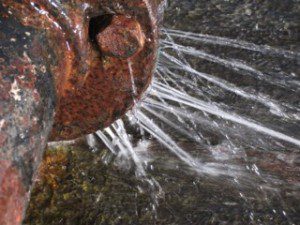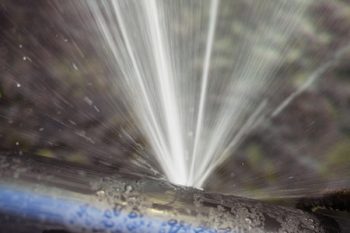This great article down below pertaining to What to Do When a Pipe Bursts in Your Home is without a doubt engaging. Check it out for yourself and see what you think about it.

The prompt reaction when a pipe bursts in your building is to go in full panic mode. Don't fret; you are not the only one as a lot of home owners feel this way, also. After all, this issue can result in significant house damage.
Though it may be hard to do, remain tranquil and also accumulated. Making hasty decisions can make the situation even worse. To help you out, here are six instant steps you must take when encountering burst pipelines. Keep in mind, understanding is power so checking out this before it occurs will certainly allow you to remain in control even amidst a substantial emergency water leak:
Conduct a Quick Visual Assessment
Though your instinct is to turn off the shutoff right away, pause for some time and carry out a fast visual assessment of the website. Attempt and spot where the water is leaking from. Doing so will permit you to advise the plumber on what area to take a look at. This less-than-a-minute perusal will save you time and help your plumber quickly identify the root cause.
Shut the Main Water Shutoff
After a fast check, you can currently turn off the major water. Maintaining water running will certainly lead to enormous damage. The last thing you require is significant flooding warps wooden floorings or damages home appliances and furnishings. You likewise want to stay clear of mold growth. Shut off the valve as well as call the plumber for an emergency assessment.
Drain the Pipe
As you wait on the plumber to arrive, drain the water streaming in the pipes. Just run your faucet and flush the commode to ensure that whatever water is remaining will entirely drain. When you do this, the leakage will stop going where it's not intended to be in the first place. Keeping that, the plumber can additionally work faster. Just don't forget to turn off the faucet after the pipelines are drained.
Try a DIY Pipe Repair Work
If you've got handyman skills, do a minor repair like sealing a little fracture. You can get piping sealer to make quick fixes. Be cautious with the application, so you don't get worse any kind of issues. If you need to tighten up a few nuts and screws, resist need to over-tighten as this can result in leakages down the line.
Remove Any Type Of Standing Water
Don't let any kind of standing water sit for too. It will certainly lead to more damages if water seeps into your floorings or carpet. You additionally don't desire it to flow right into essential things like electronics. Clean up the water and also completely dry the area off quickly. If you have electrical followers, maintain them going to flow the air and also advertise much faster drying out.
Call a Trustworthy Plumber
If you feel unclear concerning your skills to deal with a little crack or tiny leakage, it is best to call a professional plumber. When it comes to repair services, they have the expertise, abilities, devices, and experience to obtain things done quickly. Playing with pipelines is not a joke as it can lead to even more issues if done inaccurately. Discovering a reliable plumbing solution assures your water leakage is dealt with efficiently and efficiently.
A Frozen Pipe Has Burst, What Are The Next Steps?
How to Tell if Pipes are Frozen
It’s important to catch frozen pipes early to prevent damages. Typically, you will be able to boost your thermostat or talk a professional plumber before any damage occurs. However, here are a few signs that will help you identify if your pipe is frozen.
No Water – An obvious sign that you have frozen pipes is if there’s a complete lack of water coming from your faucets or fixtures. Frost – If you can gain access to view your pipes, check to see if there is visible frost on them. Take note of which parts of the pipe has frost. Smell – If your pipes freezes, it will block food and waste down your drain, causing a backup and your room to begin to have a bad smell. How to Tell if a Frozen Pipe has Burst
Inspect the Inside of the Building. Go through each area of the building and look for actively dripping water and signs of water damage. Examine any exposed pipes and check them for frost or condensation. Especially keep an eye on rooms such as bathrooms, kitchens, laundry rooms, and unheated areas of the building. Turn on the faucets and flush your toilets. Ensure they are working and the water has no discoloration or smell to it. If there is only a slow trickle of water coming out, or no water at all, this might mean a frozen pipe has burst. Check your water meter. If all fixtures in the building are off and it still shows movement, this could be a sign of a burst. Check the exterior of the building. Look for water building up anywhere out of the ordinary, or sinkholes in your yard. Remove Water Right Away
It is important to clean up water right away to prevent mildew and mold buildup. You will need towels, buckets, mops, and a wet/dry vacuum. Do not wait for the plumber to remove the water for you, the longer you wait the more likely it is that you’ll get mold or severe water damage.
Avoid Extreme Temperatures
First off, make sure the temperature in your home is no lower than 55*F. If you are going to be gone for a long time, turn off your water with the shut off valve to prevent freezing and bursting.
Don’t Leave Still Water in Pipes
When the weather gets too cold, you should let water drip from your faucet. While the dripping might be irritating, this will help prevent water from freezing. You can detect a frozen pipe if the faucet stops working, or the toilet doesn’t refill.
Taking Precautions with Frozen Pipe Damage
A burst pipe is one of the most common issues people face at home. There can be a number of reasons why pipes burst in harsh climate conditions such as extremely cold temperatures. Low to freezing temperatures can freeze the pipes, causing there to be frozen pipe damage and leading them to burst. Regardless of the type of pipes – whether they be metal or plastic, they can still expand or burst and cause water damage to your home. A burst pipe also requires a significant amount of costs in repairs. This is why it’s important to take all the safety measures to prevent pipes from bursting.
Below are some frequently asked questions and helpful steps to take to safely solve any problems you may be experiencing with your pipes at home.
What to Do When a Pipe Bursts:
Turn off the main water supply Contact a professional Quickly remove and clean excess water to avoid further water damage. Take pressure off pipes by draining the faucets Circulate warm air in your home to slowly thaw pipes Use a repair sleeve to temporarily cover the damaged area of the pipe https://jenkinsrestorations.com/frozen-pipe-has-burst-whats-next/

We were introduced to that article about How to Fix a Burst Water Pipe through an associate on another domain. Enjoyed our posting? Please share it. Help somebody else locate it. I am grateful for your time. Don't forget to pay a visit to our blog back soon.
Request Service